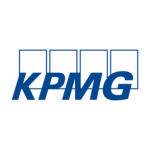On December 27 2022, the draft Chinese VAT law (the Draft) was submitted to the National People’s Congress (NPC) for the first round of review. As part of the legislative process, the Draft was also open for public consultation until January 28 2023. It is expected that the Draft will be approved by the NPC in the course of 2023.
For context, since their inception the Chinese VAT rules have existed as regulations issued by the State Council (i.e., the cabinet) rather than as a law passed by the NPC. However, in recent years China has sought to put existing taxes on a statutory basis, and the enactment of a VAT law has long been a core objective of this initiative. Indeed, VAT is the most significant tax in China in terms of revenue raising.
The last major change to the Chinese VAT regime came in 2012–16 when business tax (BT) was merged into VAT. BT applied to service provision, financing arrangements, real estate and IP transactions, and the merger left various oddities in the Chinese VAT system which the new VAT law is seeking to address.
In addition, the new VAT law seeks to better align Chinese rules with the OECD International VAT/GST Guidelines’ place of consumption rules for determining whether the place of supply is in China. It also seeks to strengthen the provisions on granting refunds of excess input VAT credits, a relatively new innovation in the Chinese VAT space.
Key changes in the draft Chinese VAT law
Highlighted below are some important changes in the areas of non-creditable input taxes, simplified taxation, deemed sales, and mixed sales.
Non-creditable input taxes – different from most other countries, China does not exempt loan interest from VAT. Previously, BT applied to interest and this was carried into the VAT regime. However, up to now, no input credit was provided for loan interest. This changes in the Draft, and the new credit will provide much welcome relief to businesses. At the same time, simplifications are brought to the granting of VAT input credit for food, beverage, and entertainment services provided that the consumption is business related.
Simplified taxation – the existing VAT rules provide for a ‘simplified’ VAT levy (i.e., without consideration of input credits) for smaller businesses of 3%, and a 5% rate applying to the sale and rental of real estate (a legacy of the old BT regime). The Draft flags that the 3% rate will be retained but it remains to be seen whether the 5% rate will also be ‘folded’ into it.
Deemed sales – the existing VAT rules set out a multitude of instances in which a supply is deemed for VAT purposes; these are narrowed significantly in the Draft. The axe is taken to the deeming charge on consignment sales, inter-province transfers between branches of the same company, capital injections, distribution-in-kind to shareholders and free-of-charge provision of services. That said, the Draft still applies the deeming rule to free-of-charge supplies of financial products.
Mixed sales – the application of mixed sales rules (which apply the VAT rate of the main supply) have been widened in the Draft. Going forward, where the supplies are subject to VAT at two rates, the mixed sales rule can be applied; up to now, there needed to be both goods and services in the mix.
For more details on the draft VAT law, please refer to KPMG’s publication via this link.












